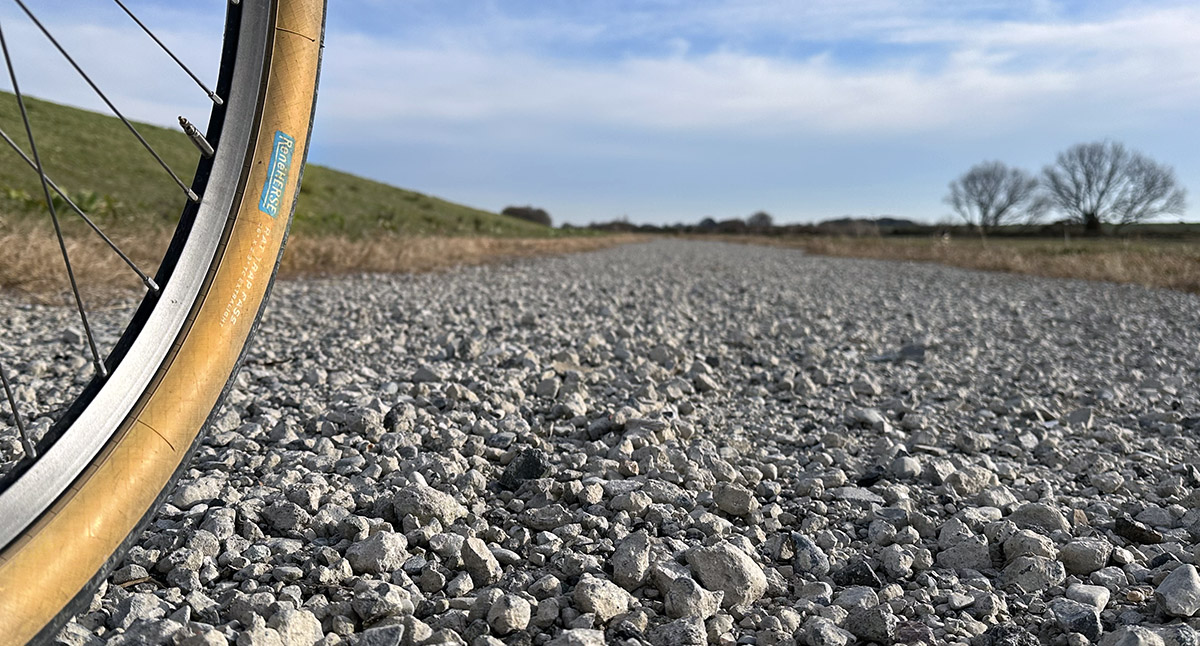Japan’s Longest Gravel Road?
I love solo rides, especially on flat terrain. They have a different rhythm from rides with friends, and from mountainous courses. They invite meditation und contemplation. They are also a great time to test equipment and ideas.
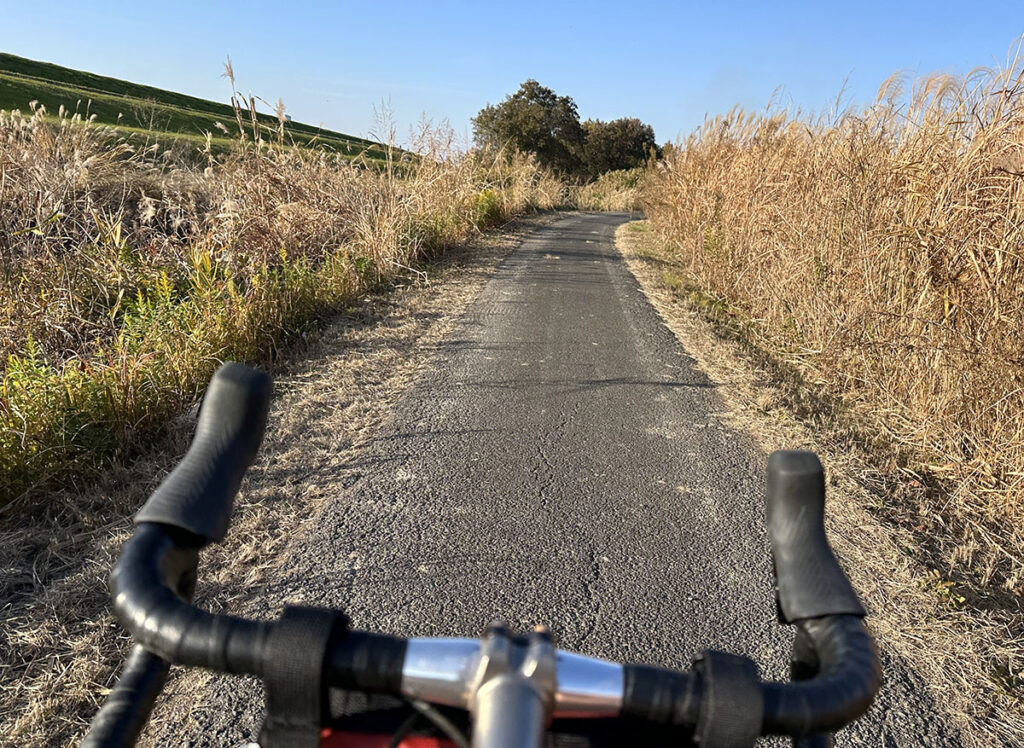
During our year-end trip to Japan, I discovered perhaps my favorite course for solo rides. Japan is a country of contrasts. The sparsely populated mountain regions are so scenic and beautiful, and criss-crossed by the most wonderful roads. And then you have Tokyo, a metropolis of 37 million people that is set on the flat Kanto Plain. The wonders of cycling in Japan’s mountains are well-known, but few would think of the Kanto Plain as a great cycling destination. But Japan is always full of surprises.
The Edo River is one of the most important waterways of Japan. It used to flood a lot, so the areas right along the river traditionally were used for agriculture. And that’s how you find tiny roads, barely wide enough for a Japanese Kei car, that wind through bucolic fields.
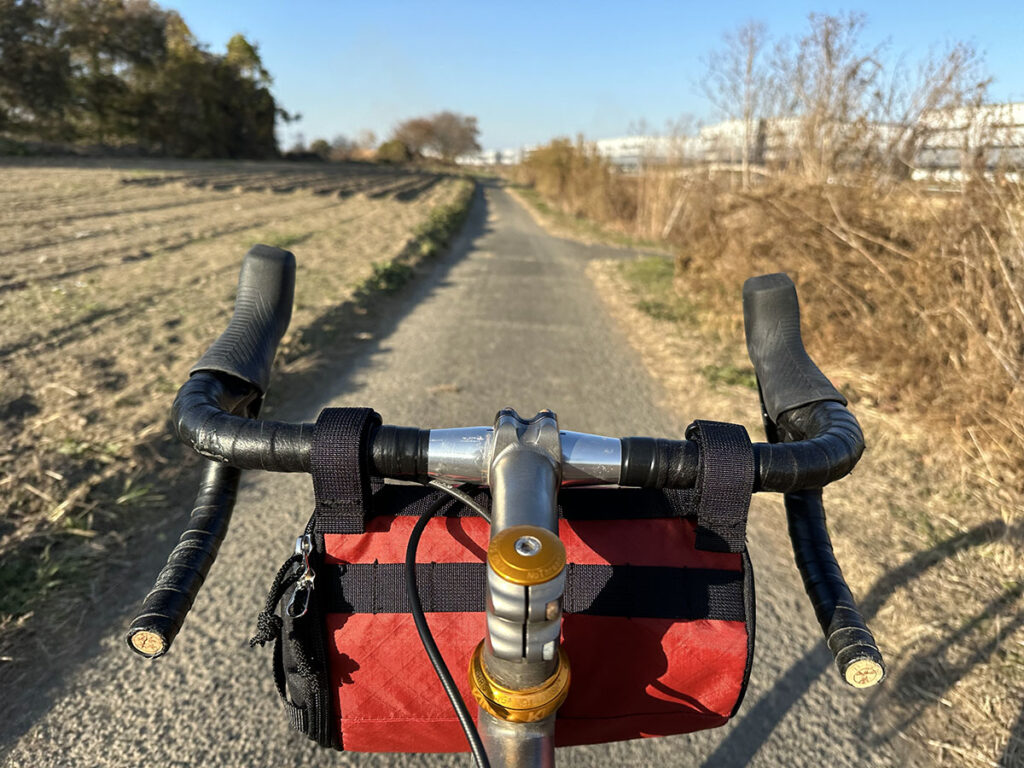
The metropolis is encroaching—a long line of e-commerce fulfillment centers now line the riverside. But the little roads and farms remain, producing vegetables for Tokyo’s gourmet restaurants that insist on sourcing their ingredients locally for freshness and because they value the direct relationship to the farmers.
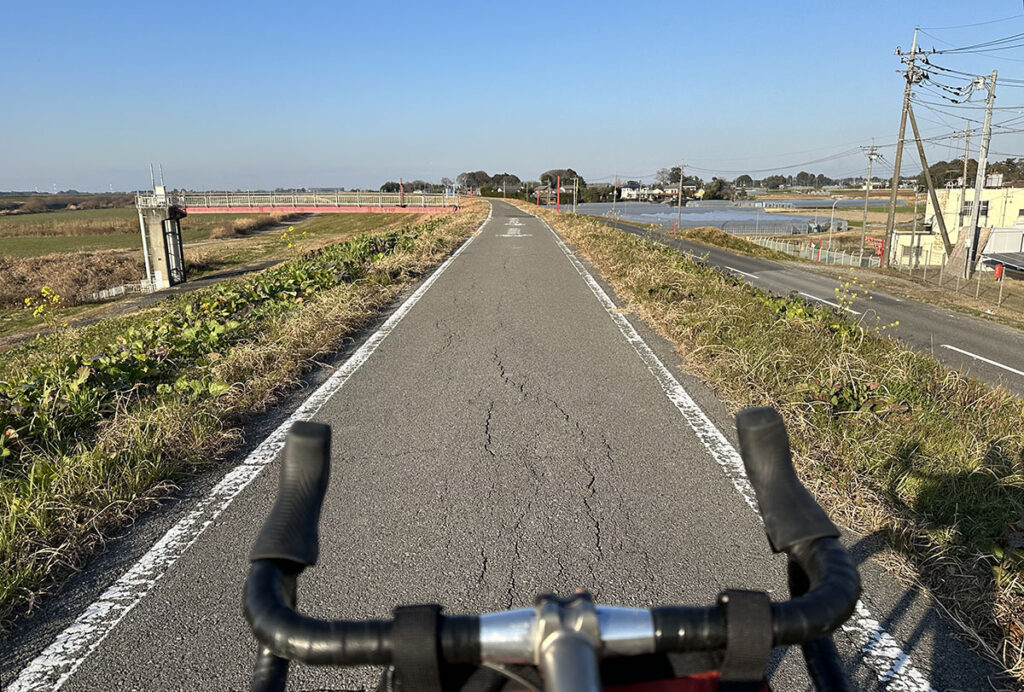
The Edo River itself is lined by huge levees on both sides. On top of the levee is a popular bike path that heads upriver for more than 100 km (65 miles). Being able to ride that far with just a handful of traffic lights and stop signs is rare in any urban area, but especially in Tokyo. But that is not all…
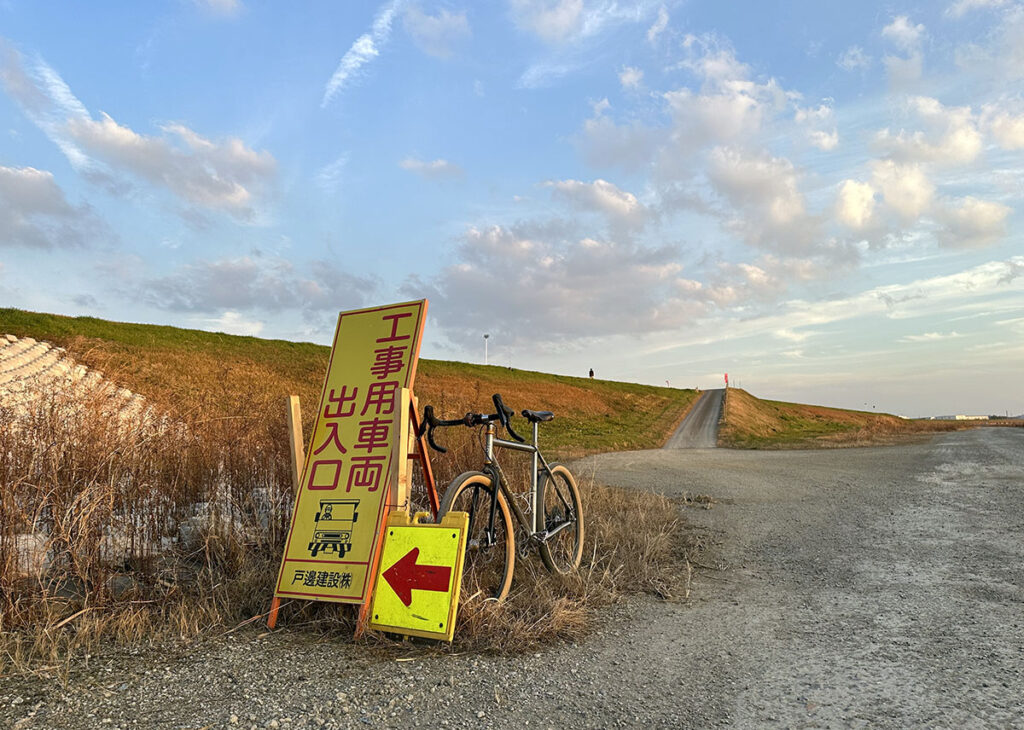
Down at the river level are gravel roads for the inspectors that check the levees weekly, and for the trucks that work on the weak spots that need shoring up. With 37 million people threatened by flooding if the levee breaks during one of the frequent typhoons, keeping the levees in perfect condition is a serious matter. At frequent intervals, there are ramps that go down to the river level. That was all the invitation I needed to explore…
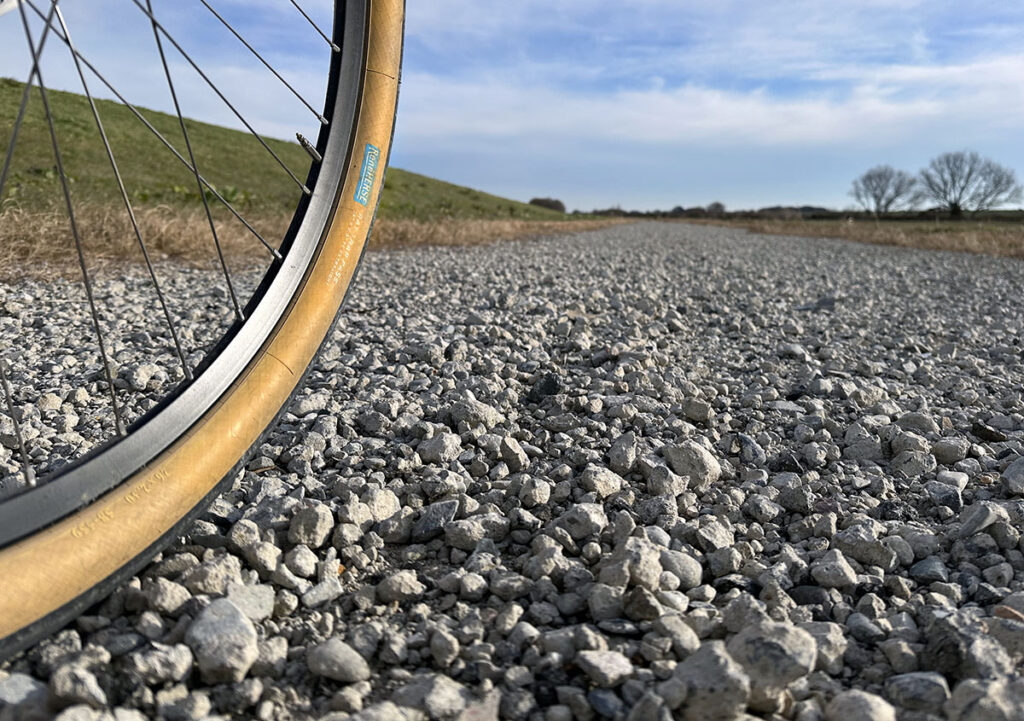
The gravel road along the river is well-maintained, but it is intended for big trucks. The surface varies between chunky traction ballast in many sections…
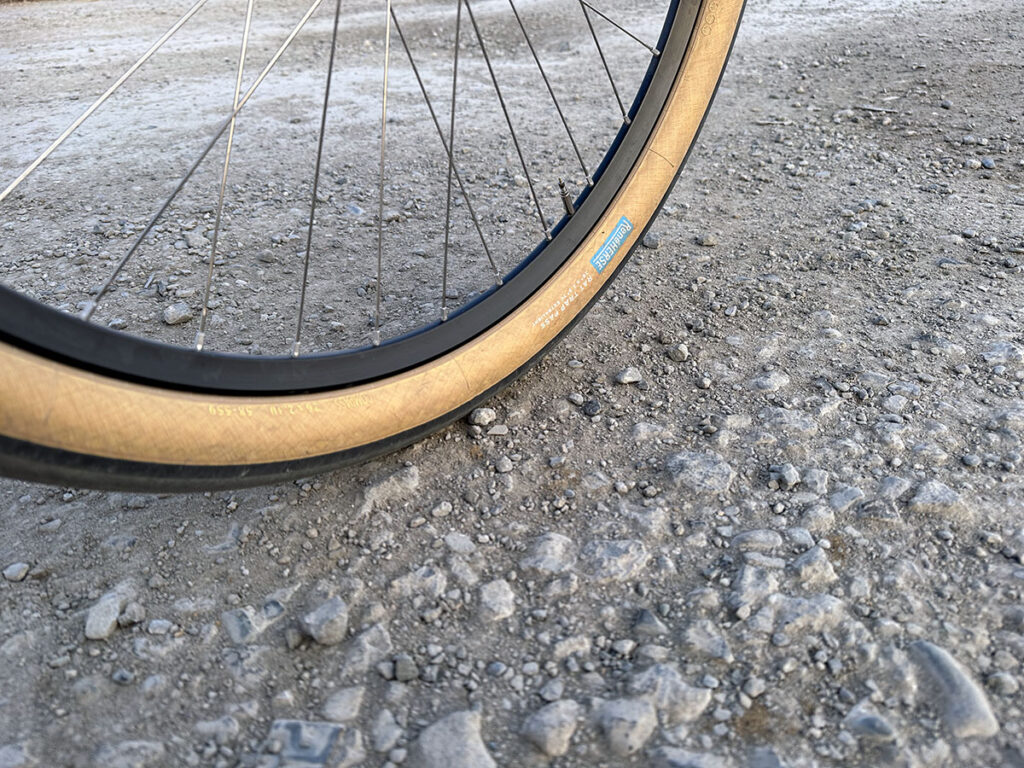
…and relatively smooth gravel in others. There are very few potholes and no washboard at all. In other words, it’s gravel paradise.
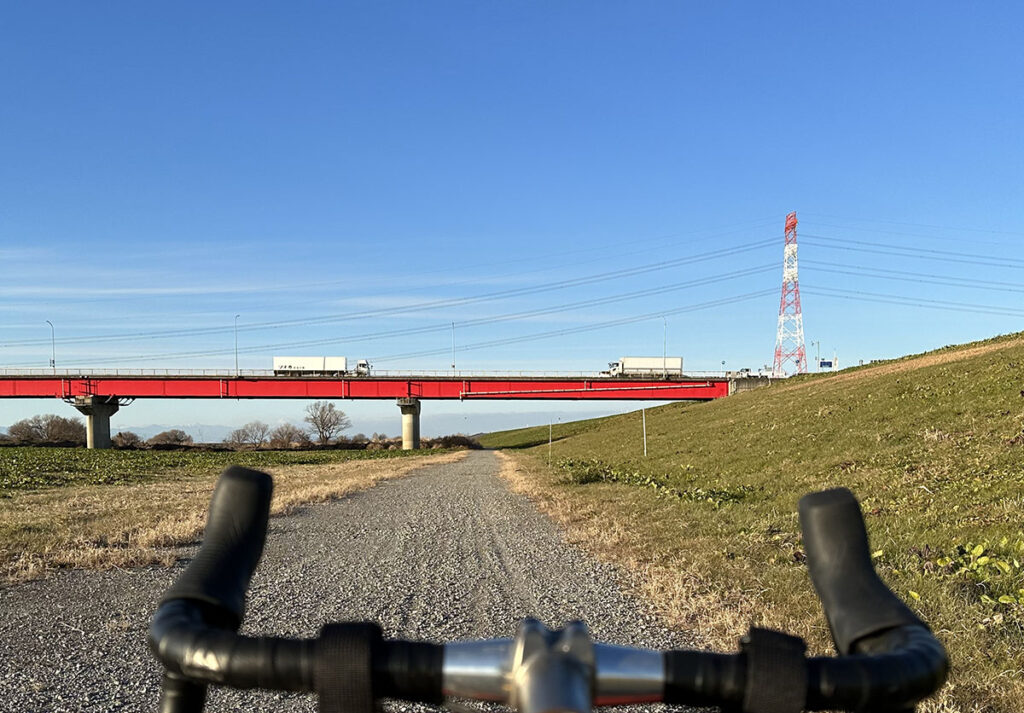
This gravel road continues for many kilometers. I found it very meditative. Between the levees, my world was only 400 meters (1/4 mile) wide, but I had it—and the river—all to myself. Once in a while, I’d see another cyclist or walker on the path on top of the levee. Roads and railroad lines traversed on bridges, reminders that I was still in the metropolis. But they never intruded into my space.
That doesn’t mean riding here was boring. With the gravel surface changing every few kilometers, I quickly found that the coarse gravel was best dispatched at high speed. I reduced my tire pressure to about 20 psi (1.4 bar), a value that I had used in the Oregon Outback. It worked well here, too. I could feel that the bike had less resistance the faster I went. It was great fun to fly over the coarse gravel, feeling the bike move from side to side with my pedal strokes, and going faster and faster as I pedaled harder. Perhaps it’s that the tires don’t sink as deep into the gravel at speed, or other factors may be at play. Rides like these are also great times to form ideas that we can test later.
The smooth sections provided a welcome rest between the exhilarating bursts of speed. Here I could reduce my power without immediately slowing to a crawl as my bike bounced from rock to rock.
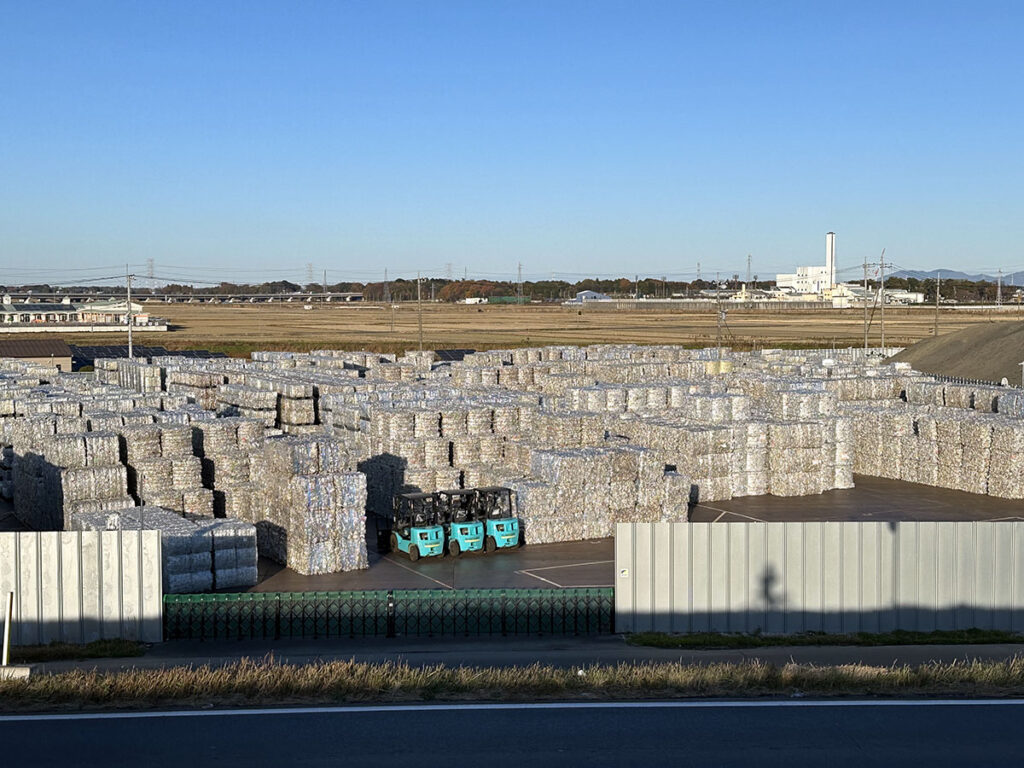
In some places, the gravel road was occupied by constructions equipment. Or it just stopped for a kilometer or so. That meant I climbed back up to the bike path and suddenly re-entered the outside world. These paved sections were a great opportunity to reflect on my trip to Japan.
I passed a metal recycling plant and marveled at the many clean bales of aluminum and other metals stacked here. Clearly, these are coming from industrial uses, but recycling works in Japan at the household level, too. Japanese families separate plastic bottles from paper and glass, and all those are picked up separately. More importantly, there’s a lot less waste in the first place. I remembered how we ate at a freeway rest area. It was huge, with dozens of food stands and a large eating area. All the food and drinks were served in reusable dishes, which we returned after our meal. There was only a single garbage can for the whole eating area, and it was about the size of an average kitchen garbage can.
Some Japanese products are packaged more than necessary, but most of those are intended for infrequent use. While I’d rather do without some of that packaging, I can see how it adds to the user’s experience—and contributes relatively little waste. Overall, it’s remarkable how little waste is generated by Japanese families and businesses. Of course, Japan isn’t without its own problems, as my Japanese family and friends readily attest.
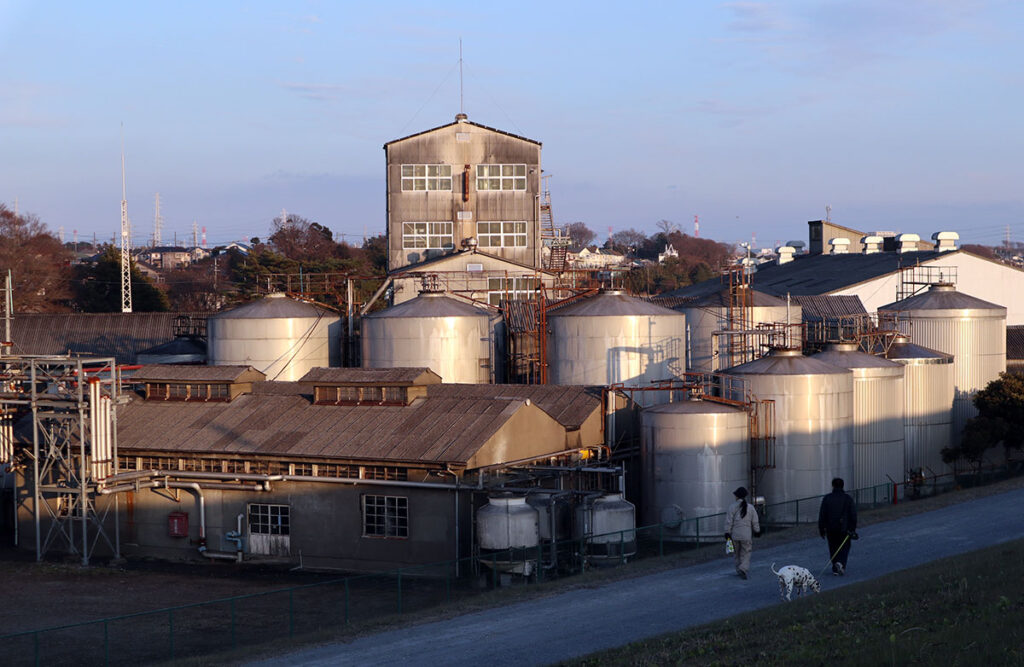
Later I passed a soy sauce factory. It’s nice to see many products still being made locally, close to where they are consumed. Old facilities are kept running, because there is no need to replace them. In fact, there was a modern factory a little up the road, and both were connected by huge pipes that ran across the fields and transferred the soy sauce from one factory to the other.
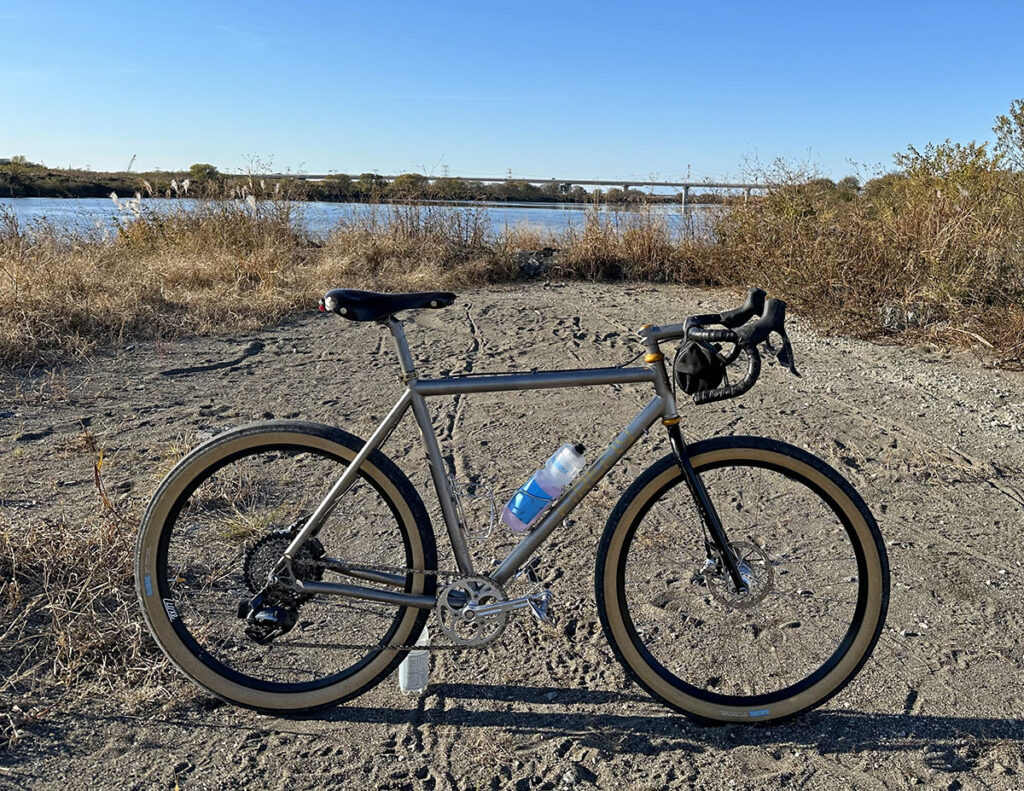
Then I was back down at the river level. My gravel road became narrower and wound through the reeds that line the river. And then it suddenly ended. I had reached the point where the Edo splits from the Tone River.
It’s a weird sight: Usually, rivers have confluences, where one river joins another. But here the Edo split off from the Tone River. It seemed unnatural, because it is: Originally, the Edo was the lower part of the Tone River, but much of the Tone was diverted almost 400 years ago to keep it from flooding Tokyo. What remained became the Edo River, which formed an important transportation artery before railroads (and later trucks) took over. I was in the triangle formed by the two rivers…
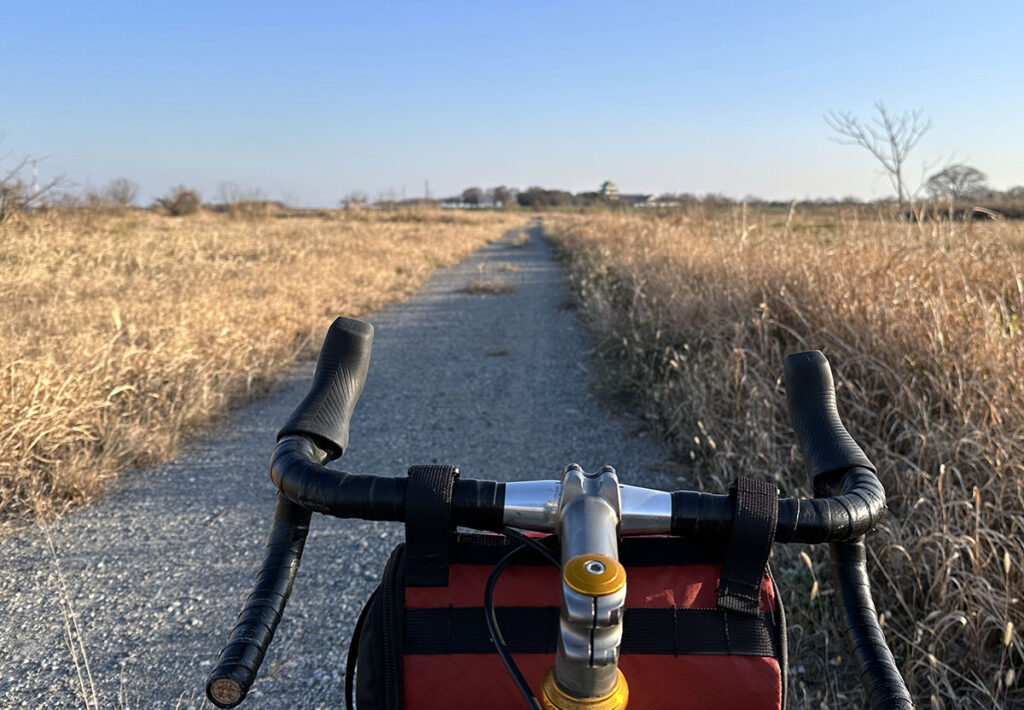
I turned around and headed back the way I had come. In the distance, I noticed a little tower. It had been hidden by the levee on the way here, but now I could see it peeking over the trees.
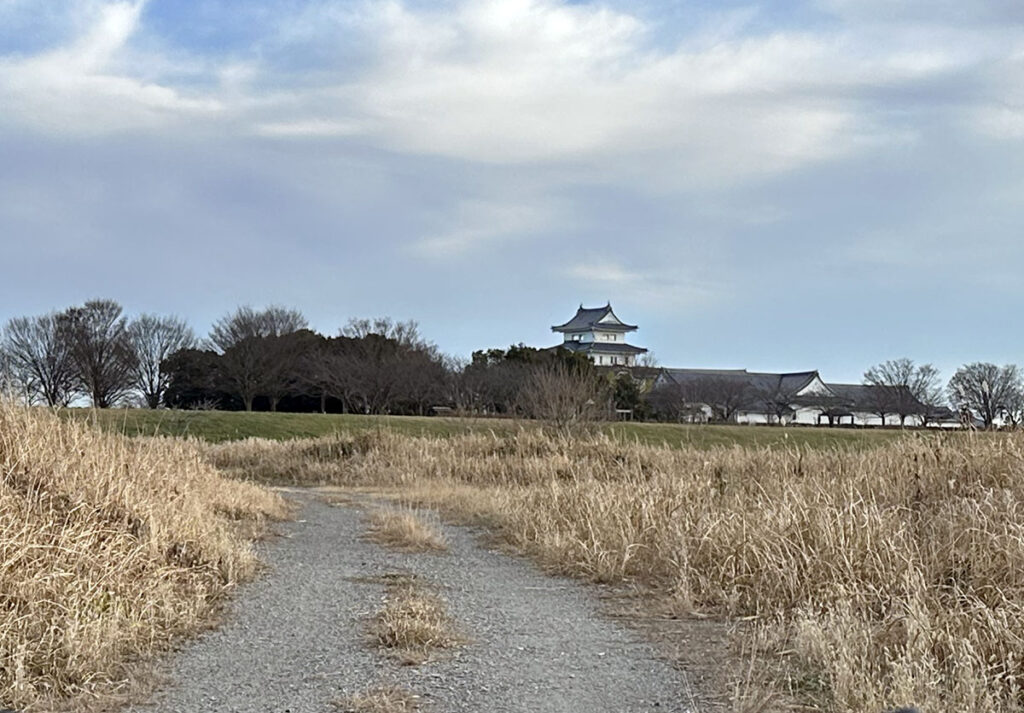
As I got closer, I saw that it was a Japanese castle. I rode a path up the levee to check it out.
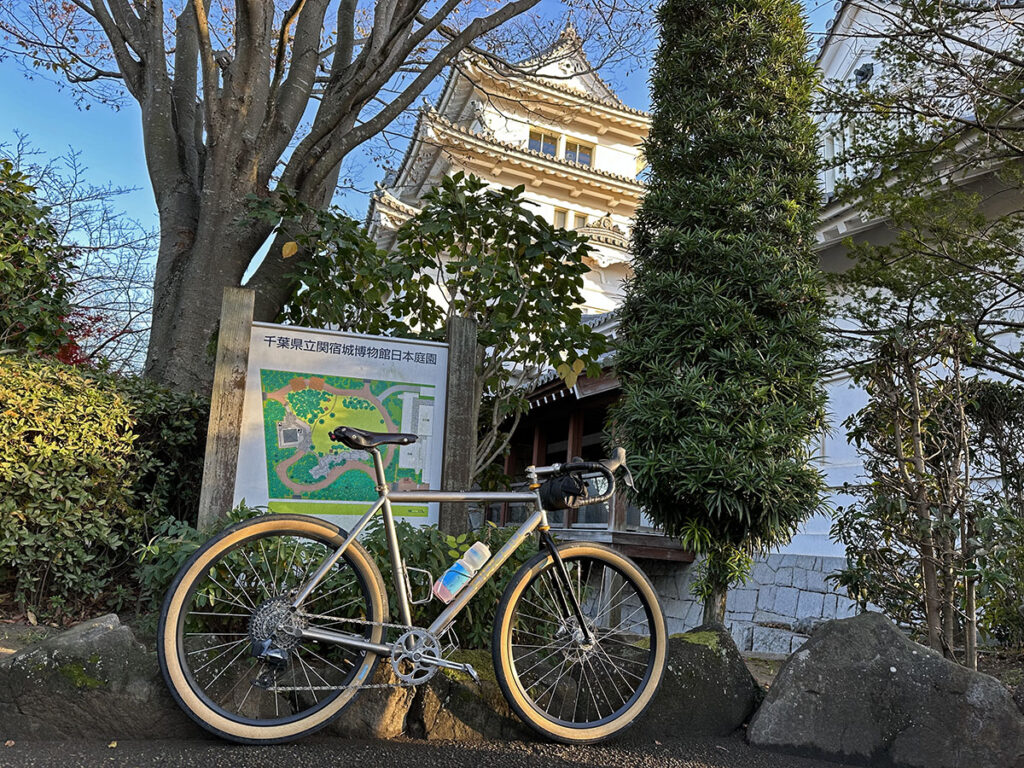
Sekiyado Castle was built hundreds of years ago at this strategic location where the two rivers join. The castle that stands here today is actually a reconstruction, as the Meiji government during the 1870s ordered the destruction of all feudal fortifications. The ‘new’ castle houses a museum that I hope to visit another day. No time for that today, because it was getting late…
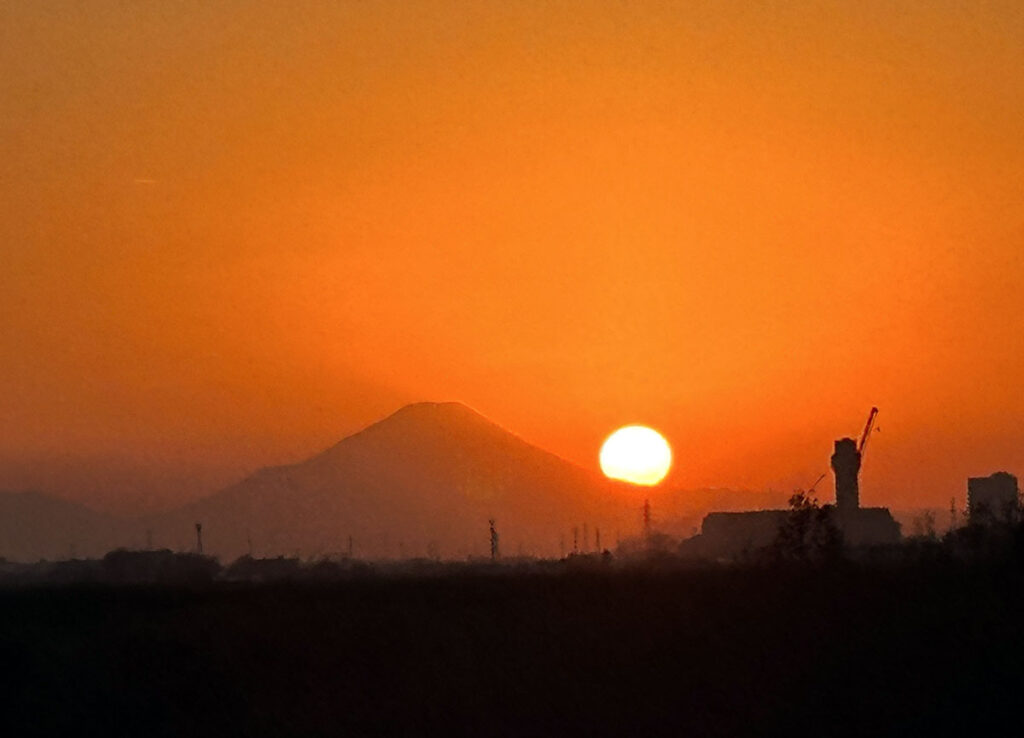
I had to speed up a bit on the way back. I had forgotten that Tokyo is much further south than Seattle, and the sun sets much faster. One moment, it seemed high in the sky, the next, it touched the horizon. At that point, Mount Fuji revealed itself. The giant volcano had been hidden in the haze—it’s about 125 km (75 miles) distant. Now the setting sun outlined it against the blazing evening sky.
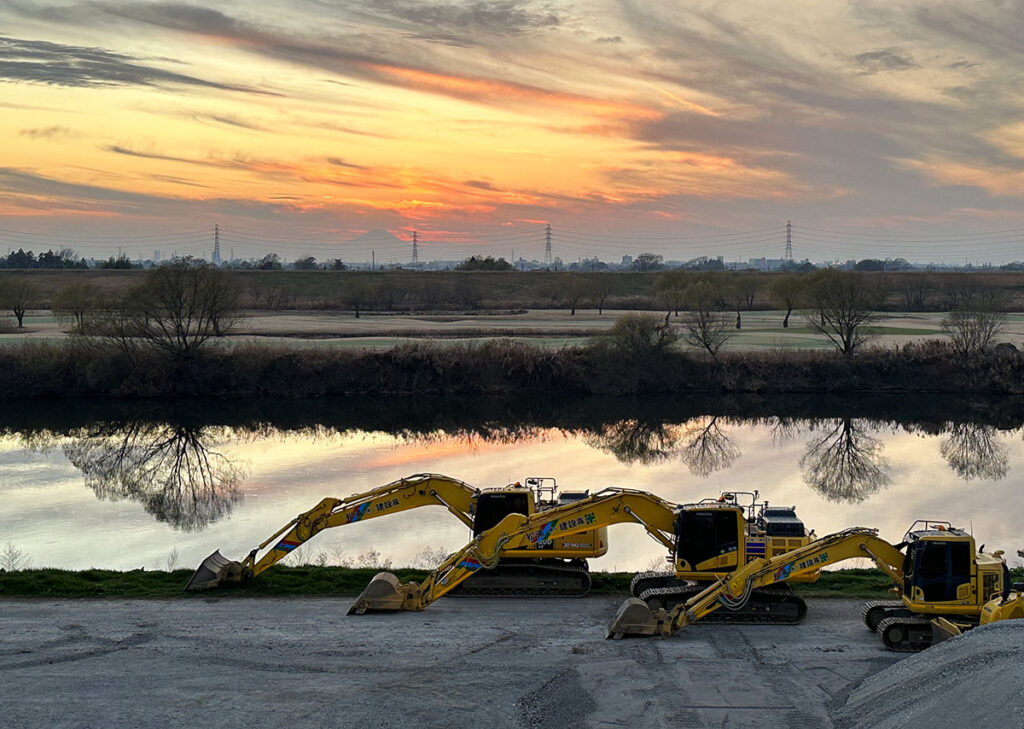
Fortunately, twilight lasts a long time in winter, even here. As I raced along the bike path, I marveled at the gravel road I had discovered, and also at a country where there is so much pride in everything everybody does. Even constructions workers line up their excavators with a thought about the aesthetics, because, why not?
Further reading:
- This ride on Strava (with route)
- A very different urban gravel ride with friends


